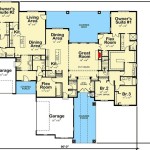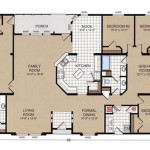Care Plan Template for Home Care
A care plan serves as a comprehensive roadmap outlining the specific services and support required to meet an individual's needs in a home care setting. It is a dynamic document that should be regularly reviewed and updated to reflect changes in the individual's health, preferences, and overall well-being. A well-structured care plan template provides a framework for organizing essential information and ensures consistency in care delivery. This article will delve into the key components of a comprehensive care plan template for home care.
1. Client Information and Assessment
The care plan should begin with a detailed section dedicated to the client's personal information, including their name, date of birth, address, contact information, and emergency contacts. This section should also include a comprehensive assessment of the client's physical, cognitive, and emotional needs. The assessment should document their medical history, current medications, allergies, and any limitations or disabilities. This information provides a foundation for understanding the individual's specific needs and tailoring the care plan accordingly.
2. Goals and Objectives
The care plan should clearly define the client's individual goals and objectives. These goals should be specific, measurable, achievable, relevant, and time-bound (SMART). For example, a goal might be to improve the client's mobility, increase their independence in daily activities, or maintain their cognitive function. Each goal should have corresponding objectives that outline the specific steps and interventions that will be taken to achieve the desired outcome. This section ensures that everyone involved in the care plan understands the client's aspirations and the specific strategies employed to support their achievement.
3. Services and Interventions
The care plan should outline the specific services and interventions that will be provided to the client. This section should include a detailed description of each service, including the frequency, duration, and any necessary equipment or supplies. For example, the care plan may include services such as personal care, medication management, meal preparation, transportation, or companionship. The care plan should also specify the qualifications and responsibilities of the caregivers providing each service. This section ensures that care is delivered according to the client's needs and that the caregivers have the necessary training and expertise to meet their requirements.
4. Communication and Collaboration
Effective communication and collaboration are essential for successful home care. The care plan should address how information will be shared among all team members, including the client, family members, caregivers, and healthcare professionals. It should also outline the process for reporting any changes in the client's condition or needs. This section ensures that everyone involved stays informed and that care is delivered in a coordinated and responsive manner. The plan should also address how communication preferences of the individual and their family will be respected, ensuring that information is shared in a manner that is clear, accurate, and culturally sensitive.
5. Documentation and Monitoring
The care plan should include a detailed documentation section for recording the client's progress and any changes in their condition. This information should be updated regularly to reflect the effectiveness of the care plan and to identify any areas needing adjustment. The documentation should also include any relevant assessments, interventions, and outcomes. This section provides a comprehensive record of the client's care, enabling informed decision-making and ensuring continuity of care. It also ensures that the care plan is regularly reviewed and updated to reflect the client’s evolving needs.
6. Emergency Plan
In addition to the core components, the care plan should include a detailed emergency plan. This section outlines the procedures to follow in case of a medical emergency or sudden change in the client's condition. It should include contact information for emergency services, the client's medical history, and any specific instructions for responding to emergencies. This section ensures that caregivers are prepared to respond effectively in critical situations, protecting the client's safety and well-being.
A well-structured care plan template is an essential tool for delivering high-quality home care. By providing a framework for organizing essential information and ensuring consistency in care delivery, it promotes effective communication, collaboration, and accountability among all stakeholders. The information provided in this template can be tailored to meet the specific needs of each individual, ensuring that they receive the best possible care in the comfort of their own home.

Home Health Care Plan Template

Home Health Care Plan Template

Elderly Care Plan Template Example Free

Nursing Home Care Plan Template In Pages Word Google Docs Net

Care Plan Template Family Carer Tena

Healthcare Packs Care Plans Referral Forms Anatomystuff

20 Case Management Care Plan Template Simple Design

Nursing Care Plan Template Printable Instant Print Land

Personal Care Plan Templates 12 Free Format

Elderly Care Planning Activity Pack Teacher Made Twinkl








